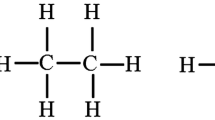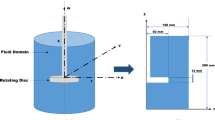Abstract
Magnetorheological fluid is an excellent versatile smart fluid. The applied magnetic field acts as an impulsive force on the fluid and shows changes in the rheological properties of the magnetorheological fluids. The viscosity of the fluid changes in response to magnetization due to the soft magnetic particles present in the fluid. The main problems identified in magnetorheological fluids are sedimentation and agglomeration of the particles. These drawbacks can be improved by optimizing the conventional properties and functionalization of the fluid elements. The decisive pinpoint of this research is to study the performance of magnetorheological fluid synthesized using three variant base fluids (fork oil, engine oil, and silicone oil) blended including a compatible additive and with iron particles dispersed in the fluid. The synthesized fluid’s rheological properties are investigated in both static and dynamic modes, and the observations were verified, with aim to optimize the efficiency and potential of the MR fluid. This study helps to choose an efficient sample for future damping applications in automobile industries.










Similar content being viewed by others
References
C Liu, J Xie and D Cai Mechanics 26 31 (2020)
R Tao J. Phys. Condens. Matter 13 R979 (2001)
H Wu, L Hao, C Chen and J Zhou ACS Omega 5 27425 (2020)
M Kumar, A Kumar, A Alok and M Das IOP Conf. Ser. Mater. Sci. Eng. 804 012012 (2020)
M R Jolly, J W Bender, and J D Carlson J. Intell. Mater. Syst. Struct. 10 262 (1999)
N Jahan, S Pathak and K Jain Eng. Asp. 529 88 (2017)
A Sidpara and V K Jain Int. J. Adv. Manuf. Technol. 55 243 (2011)
A H Dorosti, M Ghatee and M Norouzi J. Magn. Magn. Mater. 498 166193 (2020)
W O Rosa, F Vereda, and J de Vicente Front. Mater. 6 1 (2019)
S L Kalurkar, P D Darade, and D N Korade Int. J. Eng. Sci. Comp. 6 8389 (2016)
R Asiaban, H Khajehsaeid, E Ghobadi and M Jabbari Polym. Test. 87 106512 (2020)
Y Tong, X Dong, and M Qi Smart Mater. Struct. 26 025023 (2017)
C A Walikar, S Kolekar and R Hanumantharaya J. Mech. Eng. Autom. 5 84 (2015)
C Gila-vilchez, A B Bonhome-espinosa, P Kuzhir, A Zubarev, J D G Duran, M T Lopez-lopez, C Gila-vilchez, A B Bonhome-espinosa, P Kuzhir, A Zubarev and J D G Duran I. Rheol. 62 1083 (2018)
Y Ido, H Nishida and Y Iwamoto J. Magn. Magn. Mater. 431 94 (2017)
I D Jung and M Kim J. Magn. Magn. Mater. 404 40 (2016)
B K Kumbhar and S R Patil Sci. Technol. Int. J. 18 432 (2015)
P Yang, M Yu and J Fu J. Intell. Mater. Syst. Struct. 29 12 (2018)
M Ashtiani and S H Hashemabadi J. Magn. Magn. Mater. 374 711 (2015)
R Thomas, R Hills, and M I Us 1 Bulletin 2003/13 EP1296335A2 (2003)
Y Rabbani, M Ashtiani and S H Hashemabadi Soft Matter 11 4453 (2015)
F Tian, J F Zhou, C L Shao, H B Wu and L Hao Colloids Surfaces A Physicochem. Eng. Asp. 591 124531 (2020)
J Aha and S Svrjala Appl. Rheol. 18 2 (2008)
D M Patel and R V. Upadhyay Mater. Res. Express 6 015707 (2019)
Waad Nassar (the École Polytechnique Palaiseau-France) (2012)
Malvern Instruments Worldwide White Pap. 2 (2016)
S Elizabeth Premalatha, R Chokkalingam and M Mahendran Am. J. Polym. Sci. 2 50 (2012)
J K Han and H J Choi Colloid Polym. Sci. 296 405 (2018)
R F Ierardi and A J F Bombard J. Phys. Conf. Ser. 149 012037 (2009)
E C Bingham Bulletin n.d. 13 309 (1917)
Ubaidillah, N Nordin, S-B Choi, S Mazlan, I Bahiuddin, D Utami, N Mohamad, S Abdul Aziz and F Imaduddin Materials (Basel) 11 2195 (2018)
N Wang, X Liu, S Sun, G Królczyk, Z Li, and W Li J. Magn. Magn. Mater. 501 166443 (2020)
M S Cho, S T Lim, I B Jang and H J Choi Magnetics 40 3036 (2004)
H Sahin, F Gordaninejad, X Wang and A Fuchs Act. Passiv. Smart Struct. Integr. Syst. 6525 65250D (2007)
J Rodríguez-López, H C Shum, L Elvira and F Montero De Espinosa J. Magn. Magn. Mater. 326 220 (2013)
R V. Upadhyay, Z Laherisheth, and K Shah Smart Mater. Struct. 23 015002 (2014)
J De Vicente, D J Klingenberg and R Hidalgo-Alvarez Soft Matter 7 3701 (2011)
V G Kamble and S Kolekar J. Nanotechnol. 6 7 (2015)
M W Kim, W J Han and Y H Kim Eng. Asp. 506 812 (2016)
C Fei, L Haopeng, H Mengmeng and T Zuzhi Manuf. Process. 00 1 (2020)
C S Maurya and C Sarkar 32 1624 (2021). https://doi.org/10.1177/1045389X20987001
B Gopinath, G K Sathishkumar, P Karthik, M M Charles, K G Ashok, M Ibrahim, and M M Akheel Mater. Today Proc. 37 1721 (2020)
Acknowledgements
I thank our institution, Kalasalingam Academy of Research and Education, for carrying out this research work. I am grateful to acknowledge Dr RV Upadhyay and his research group from the Department of Applied Science, PDPIAS, CHARUSAT, Gujarat, for supporting instrumentation and analysis.
Author information
Authors and Affiliations
Corresponding author
Additional information
Publisher's Note
Springer Nature remains neutral with regard to jurisdictional claims in published maps and institutional affiliations.
Statement of Novelty: This research work is focused on preparing low cost MRF with reduced sedimentation behavior. The fluid is prepared manually considering analytical necessity of cost efficiency, thermal stability, and durability with certainty. To reduce the sedimentation, the base fluid is functionalised with supported compatible Silicone additive. Three different non-magnetic base fluids were selected to prepare MRF and the synthesized fluids are analysed to determine the efficient fluid showing reduced sedimentation behavior. In regard, the efficient fluid was observed with 40% low sedimentation rate. This low level of sedimentation with preferred composition of homogenous fluid achieved in this research work is distinctive and discussed detailed in particular. Other dynamic rheological significant properties are purposefully studied in account of shear force behavior.
Rights and permissions
About this article
Cite this article
Sharmili, P., Rajesh, S., Mahendran, M. et al. Rheological properties of magnetorheological fluids with different base fluids and a compatible additive. Indian J Phys 96, 4245–4252 (2022). https://doi.org/10.1007/s12648-022-02346-8
Received:
Accepted:
Published:
Issue Date:
DOI: https://doi.org/10.1007/s12648-022-02346-8




